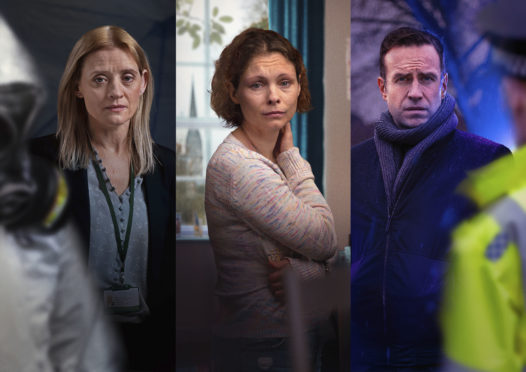
On March 4, 2018, the emergency services descended on Salisbury’s city centre where they found Sergei and Yulia Skripal unconscious on a park bench.
The pair were taken to hospital, where doctors struggled to diagnose the source of their illness.
What started off as a strange incident in a Wiltshire town soon elevated to international crisis.
The Salisbury Poisonings follows the men and women involved on the ground in Salisbury who deal with the shocking real-life incident.
One of those was Tracy Daszkiewicz, director of public health for Wiltshire Council, and she was vital in coordinating a response to the crisis.
Playing a real life character is something Anne-Marie Duff has done before – notably Queen Elizabeth I and ballerina Margot Fonteyn.
Playing one who’s still alive was a new experience for Duff, though.
“There are a few differences when you play fictional characters,” she explained.
“You’ve got the freedom to come up with all sorts of stuff, you can decide what they have for breakfast, what they like to wear, etc. And that’s fun.
“But there is something lovely about yielding to the reality of somebody else, it’s almost like somebody else is the author of your character. The difficulties lie then in working out how you portray them.
“Do you portray an idealised version of them because you got to know them? Do you portray that person as you met them? Because we’re all complex, we all have lots of different masks.
“You want to try and make a person seem like a human being, not just an impression of somebody.”
Russian security services were implicated in the poisoning. Two men were named by the UK Government as being implicated in the incident and the pair eventually appeared on Russian television to deny their involvement.
They said their visit to Salisbury was for the town’s unique cathedral – a claim which attracted derision.
“If you talk to anyone about what happened in Salisbury, they’ll immediately laugh at the cathedral comments,” Anne-Marie said.
“You forget about the collateral damage in terms of human lives and how severe it was.
“And it certainly wasn’t a joke or something to laugh about if you live there.
“It’s great that we get to explain that terror to people and how close we came to something pretty ghastly.”
The Salisbury Poisonings, BBC1, today, 9pm

Enjoy the convenience of having The Sunday Post delivered as a digital ePaper straight to your smartphone, tablet or computer.
Subscribe for only £5.49 a month and enjoy all the benefits of the printed paper as a digital replica.
Subscribe